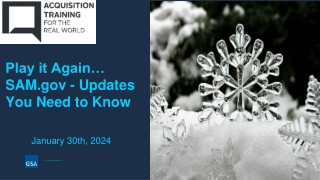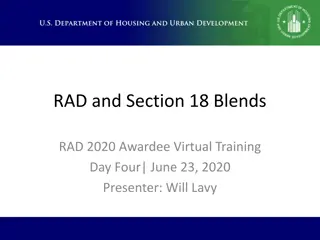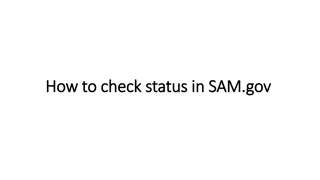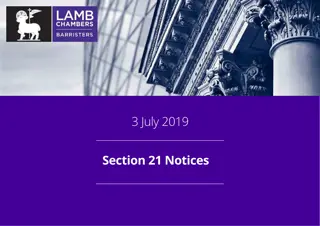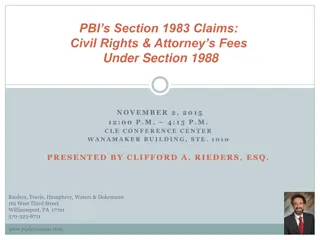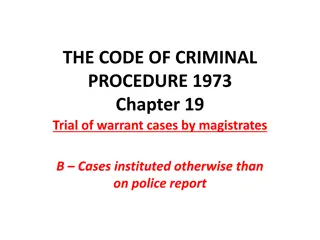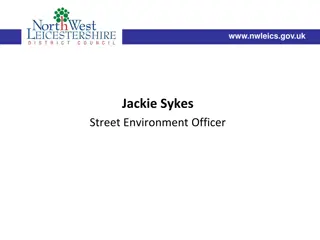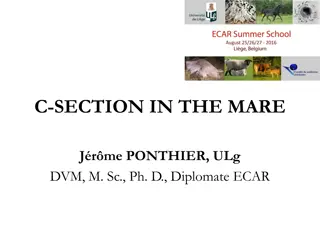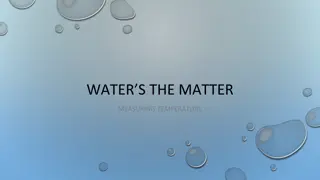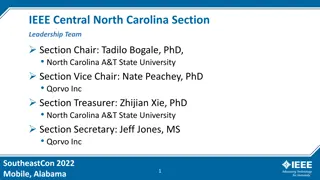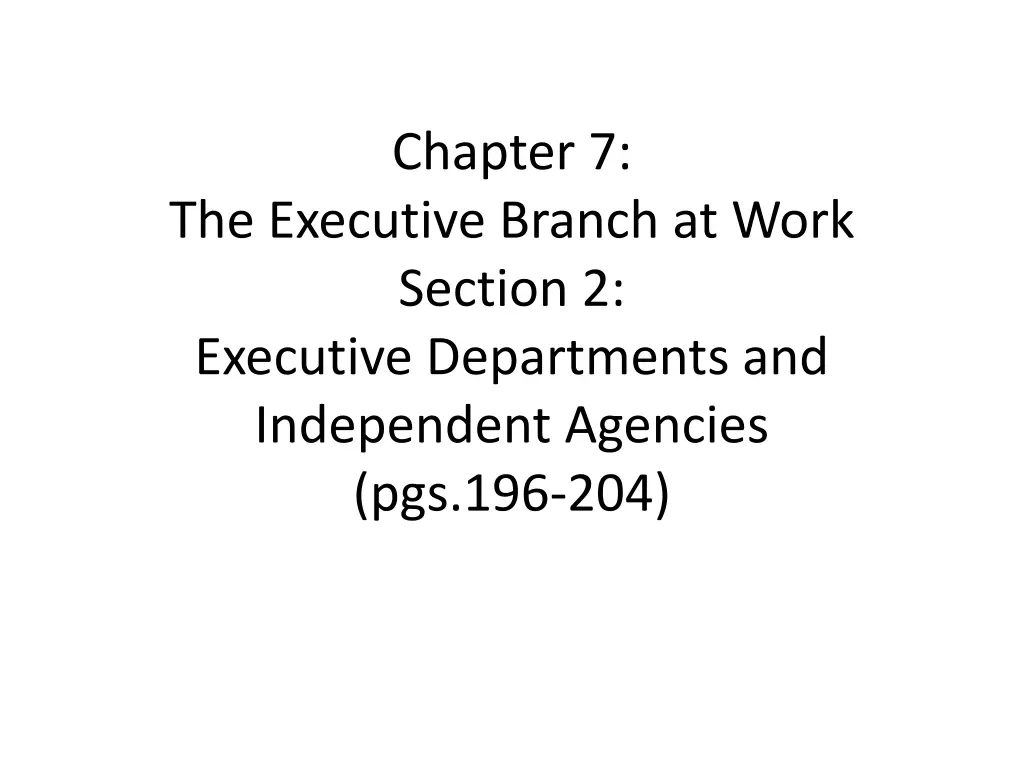
The Executive Branch: Departments and Agencies
Explore the workings of the Executive Branch through an in-depth look at Executive Departments and Independent Agencies, covering their history, structure, and significance in American governance from 1789 to the present day.
Download Presentation

Please find below an Image/Link to download the presentation.
The content on the website is provided AS IS for your information and personal use only. It may not be sold, licensed, or shared on other websites without obtaining consent from the author. If you encounter any issues during the download, it is possible that the publisher has removed the file from their server.
You are allowed to download the files provided on this website for personal or commercial use, subject to the condition that they are used lawfully. All files are the property of their respective owners.
The content on the website is provided AS IS for your information and personal use only. It may not be sold, licensed, or shared on other websites without obtaining consent from the author.
E N D
Presentation Transcript
Chapter 7: The Executive Branch at Work Section 2: Executive Departments and Independent Agencies (pgs.196-204)
Executive Departments These departments are the major units of policy making in the executive branch. There are 15 departments and they employ about 60% of all federal government employees. Within departments there are smaller, more narrowly focused agencies. Congress and the president share responsibility for them. The President picks the top officials, and Congress funds each department. http://image.slidesharecdn.com/thesispresentation-120406121157-phpapp01/95/thesis-presentation-7-728.jpg?cb=1333720805
Early Departments https://upload.wikimedia.org/wikipedia/commons/4/46/T_Jefferson_by_Charles_Willson_Peale_1791_2.jpg http://c250.columbia.edu/images/c250_celebrates/celebrated_alumni/bio_images_big/240x240_bioim_cel_2_1-01-ah.jpg Washington established the first executive departments in 1789. These were the Departments of State, Treasury, and War. The post of attorney general was also established but the Department of Justice was not created until 1870 After the Mexican-American War the Department of Interior was created for managing public lands & Indians. In 1913 the Department of Labor was created to deal with organized labor. http://a3.files.biography.com/image/upload/c_fill,cs_srgb,dpr_1.0,g_face,h_300,q_80,w_300/MTE1ODA0OTcxNjkxMDUwNTA5.jpg https://s3.amazonaws.com/static.history.state.gov/secretaries/randolph-edmund-jennings.jpg
New Departments Since 1950 http://energy.gov/sites/prod/files/styles/large/public/DOE%20logo.png?itok=kFhbKz6F In this post WWII era, Congress has created 7 executive departments These new departments reflect the expanded role of the government in Americans lives. Americans now expect the Government to take action when a problem confronts society. Examples: The Department of Housing and Urban Development was created after the Watts Riots in L.A. in 1965 and the Department of Energy was created after the 1973 Arab oil embargo. http://energy.gov/sites/prod/files/styles/large/public/HUD-Seal.jpg?itok=ehttCPOM
The Executive Departments (pgs. 198-199) Department of State 1789 Department of Defense 1789 (1947) Department of the Treasury 1789 Department of the Interior 1849 Department of Agriculture 1862 Department of Justice 1870 Department of Commerce 1903 Department of Labor 1913 Department of Health and Human Services 1953 Department of Housing and Urban Development 1965 Department of Transportation 1966 Department of Energy 1977 Department of Education 1980 Department of Veterans Affairs 1989 Department of Homeland Security 2003
Health & Human Services (HHS) It is the job of this department to protect the health of the American people. Also, it is the main provider of social services. (welfare) It employs over 65,000 people and is in charge of Social Security, Medicare, & Medicaid. (it supplements health care to about of Americans) It also has smaller agencies like the Disease Control & Prevention (CDC) and the Food and Drug Administration (FDA) https://upload.wikimedia.org/wikipedia/commons/thumb/e/e6/US-DeptOfHHS-Seal.svg/2000px-US-DeptOfHHS-Seal.svg.png
Department of Defense (DOD) 1stcalled the Department of War in 1947 it was changed to Department of Defense The DOD is massive, with 1.3 million active duty & 1.1 million National Guard and another 670,000 civilian employees It has the largest budget (in 2008 it was $480 billion) Procurement of equipment was $100 billion and another $75 billion for research. http://www.ktc-ops.com/wp-content/uploads/2014/03/dod.jpg
Department of Homeland Security Begun in 2003 b/c of the attacks on 9/11 This was a reorganization of several agencies that were already in place. The purpose was a refocus on security. It is in charge of law enforcement, border security, transportation, immigration, emergency preparedness, and all issues dealing with protecting our nation from attacks on U.S. soil. https://upload.wikimedia.org/wikipedia/commons/thumb/8/8a/Seal_of_the_United_States_Department_of_Homeland_Security.svg/2000px-Seal_of_the_United_States_Department_of_Homeland_Security.svg.png
Independent Agencies There are 140 independent agencies that operate separately from executive departments. They are created by an act of Congress. They address certain issues that have become too complicated or require too much specialized knowledge to handle through regular legislation. Example: the Environmental Protection Agency (EPA) These agencies have not only the power to make regulations that have the force of law but also the authority to decide disputes over their regulations. http://www.washingtonpost.com/blogs/federal-eye/files/2015/06/epa-logo-1.gif
Independent Executive Agencies These agencies are given executive powers like executive departments but they are not at the cabinet level Congress establishes and retains authority over them but the president exercises much of the control over their operation The president nominates the top officials of these agencies, they are approved by the Senate but report to the president. Examples: the National Aeronautics and Space Administration (NASA) & the Peace Corps https://upload.wikimedia.org/wikipedia/commons/thumb/e/e5/NASA_logo.svg/2000px-NASA_logo.svg.png
Independent Regulatory Commissions The purpose of these are to regulate some aspect of the economy. They set and enforce rules that have the force of law, and most have quasi-judicial powers to settle disputes arising from their rules. Most are led by a 3 to 7 person board, nominated by the president and approved by the Senate. The board must be bipartisan, they can t be fired by the president and have fixed terms of office. Examples: The Securities & Exchange Commission (SEC) and the Federal Communications Commission (FCC) Congress can override these Commissions http://www.q4blog.com/wp-content/uploads/2013/04/SEC-logo-large.jpg
Government Corporations This is the 3rdtype of independent agency They are organized and run like a businesses but are owned in whole or in part by the federal government. Congress creates these to achieve a public goal that private business may not be able to address. Examples: The U.S. Postal Service (USPS), National Railroad Passenger Corporation or Amtrak Gov. Corporations are not expected to make money but to at least brake even. http://vltp.net/wp-content/uploads/2012/04/USPS-Logo.jpg
Power & Accountability in the Federal Bureaucracy http://www.pblnn.com/images/article_images/freedomofinformation1.jpg In 1946, Congress past the Administrative Procedure Act that set guidelines for agency rule making including a period for public comment & participation. Freedom of Information Act of 1965 A danger in government is when agencies, oversight committees and outside interest groups form an iron triangle

